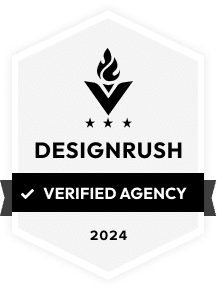
Technical SEO is a crucial aspect of website optimization that focuses on improving the technical elements of a website to enhance its visibility and performance in search engine rankings. While content and keywords play a significant role in SEO, technical SEO ensures that search engines can crawl, index, and understand a website’s content effectively. Without proper technical SEO, even the most well-designed and informative websites may struggle to achieve high rankings in search engine results pages (SERPs).
Key Takeaways
- Technical SEO is important for improving search engine rankings and visibility.
- Site structure and URL optimization can have a significant impact on search rankings.
- On-page optimization is crucial for improving search rankings and user experience.
- Site speed and performance are important factors in technical SEO.
- Mobile optimization and responsive design are essential for reaching a wider audience.
Understanding Technical SEO: What It Is and Why It Matters
Technical SEO refers to the process of optimizing a website’s technical elements to improve its visibility and performance in search engine rankings. It involves various aspects such as site structure, URL optimization, on-page optimization, site speed and performance, mobile optimization, schema markup, site security, crawling and indexing, and advanced strategies for large websites and e-commerce.
The importance of technical SEO cannot be overstated. Search engines use complex algorithms to determine the relevance and quality of websites for specific search queries. Technical SEO ensures that search engines can easily crawl and index a website’s content, understand its structure, and determine its relevance to user queries. Without proper technical optimization, search engines may struggle to understand a website’s content, resulting in lower rankings and reduced visibility.
Examples of technical SEO elements include XML sitemaps, robots.txt files, canonical tags, structured data markup, meta tags, header tags, alt tags for images, responsive design for mobile devices, site speed optimization, SSL certificates for secure browsing (HTTPS), and more.
The Importance of Site Structure and URL Optimization
Site structure plays a crucial role in technical SEO as it helps search engines understand the hierarchy and organization of a website’s content. A well-structured website makes it easier for search engines to crawl and index pages efficiently. It also improves user experience by making it easier for visitors to navigate through the site.
Best practices for site structure include organizing content into categories and subcategories, using descriptive and keyword-rich URLs, creating a logical hierarchy with clear navigation menus, and ensuring that each page is accessible within a few clicks from the homepage.
URL optimization is another important aspect of technical SEO. Optimized URLs should be concise, descriptive, and keyword-rich. They should also be static and include relevant keywords that accurately describe the content of the page. Optimized URLs not only help search engines understand the content of a page but also improve click-through rates in search results.
Mastering On-Page Optimization for Improved Search Rankings
| Metrics | Description |
|---|---|
| Keyword Density | The percentage of times a keyword appears on a page compared to the total number of words on the page. |
| Title Tag | The HTML element that specifies the title of a web page. It appears in the browser’s title bar and in search engine results. |
| Meta Description | The HTML element that provides a brief summary of a web page’s content. It appears in search engine results below the title tag. |
| Header Tags | The HTML elements (H1, H2, H3, etc.) that indicate the headings and subheadings of a web page’s content. |
| Image Optimization | The process of optimizing images on a web page by reducing their file size, adding alt text, and using descriptive file names. |
| Internal Linking | The practice of linking to other pages within a website to help search engines understand the site’s structure and hierarchy. |
| Page Speed | The time it takes for a web page to load. A faster page speed can improve search engine rankings and user experience. |
On-page optimization refers to the process of optimizing individual web pages to improve their visibility and rankings in search engine results. It involves optimizing various elements on a page, including meta tags, header tags, content, images, and internal linking.
Meta tags, such as title tags and meta descriptions, play a crucial role in on-page optimization. Title tags should be concise, descriptive, and include relevant keywords. Meta descriptions should provide a brief summary of the page’s content and entice users to click through to the website.
Header tags (H1, H2, H3, etc.) help structure the content on a page and provide search engines with an understanding of the page’s hierarchy. It is important to use header tags appropriately and include relevant keywords within them.
Content optimization involves creating high-quality, informative, and engaging content that is relevant to the target audience. Content should be well-structured with proper headings, subheadings, and paragraphs. It should also include relevant keywords naturally throughout the text.
Images should be optimized by using descriptive file names and alt tags that accurately describe the image. Alt tags help search engines understand what an image represents and can improve visibility in image search results.
Internal linking is another important aspect of on-page optimization. It involves linking relevant pages within a website to improve navigation and help search engines understand the relationships between different pages. Internal links should use descriptive anchor text and point to relevant pages.
The Role of Site Speed and Performance in Technical SEO
Site speed and performance are crucial factors in technical SEO. Search engines prioritize websites that load quickly and provide a seamless user experience. Slow-loading websites not only frustrate users but also negatively impact search engine rankings.
To improve site speed, it is important to optimize images by compressing them without compromising quality, minify CSS and JavaScript files, enable browser caching, reduce server response time, and use a content delivery network (CDN) to distribute content across multiple servers.
Tools such as Google PageSpeed Insights, GTmetrix, and Pingdom can be used to measure site speed and performance. These tools provide insights into areas that need improvement and offer suggestions for optimization.
Best Practices for Mobile Optimization and Responsive Design

Mobile optimization is essential for SEO as an increasing number of users access the internet through mobile devices. Search engines prioritize mobile-friendly websites in their rankings to provide the best user experience for mobile users.
Best practices for mobile optimization include using responsive design, which ensures that a website adapts to different screen sizes and devices. Responsive design eliminates the need for separate mobile and desktop versions of a website, making it easier to manage and maintain.
Other best practices include optimizing images for mobile devices, using legible font sizes, ensuring that buttons and links are easily clickable on touchscreens, minimizing the use of pop-ups that can obstruct content on smaller screens, and optimizing page load times for mobile devices.
Leveraging Schema Markup for Enhanced Search Visibility
Schema markup is a form of structured data that provides additional information about a webpage’s content to search engines. It helps search engines understand the context and meaning of the content, which can lead to enhanced search visibility and improved click-through rates.
Schema markup can be used to mark up various types of content, including articles, reviews, products, events, recipes, and more. By implementing schema markup, websites can appear in rich snippets, which are enhanced search results that provide additional information such as star ratings, reviews, and pricing.
Best practices for implementing schema markup include using the appropriate schema types for different types of content, ensuring that the markup is accurate and up to date, and testing the markup using Google’s Structured Data Testing Tool.
The Impact of Site Security and HTTPS on SEO
Site security is an important aspect of technical SEO. Search engines prioritize secure websites that use HTTPS (Hypertext Transfer Protocol Secure) in their rankings. HTTPS encrypts data transmitted between a user’s browser and a website, ensuring that it cannot be intercepted or tampered with by malicious third parties.
Implementing HTTPS involves obtaining an SSL (Secure Sockets Layer) certificate and configuring the website to use HTTPS instead of HTTP. Many web hosting providers offer SSL certificates as part of their hosting packages.
Best practices for implementing HTTPS include redirecting all HTTP URLs to their corresponding HTTPS versions, updating internal links and resources to use HTTPS, and ensuring that all third-party scripts and resources are served over HTTPS.
Navigating the Complexities of Crawling and Indexing
Crawling and indexing are fundamental processes in search engine optimization. Crawling refers to the process of search engines discovering and visiting web pages to gather information about them. Indexing involves storing and organizing this information in a searchable database.
To optimize crawling and indexing, it is important to ensure that search engines can easily access and crawl all relevant pages on a website. This can be achieved by creating an XML sitemap that lists all the pages on a website and submitting it to search engines.
Other best practices include optimizing robots.txt files to control which pages search engines can crawl, using canonical tags to indicate the preferred version of a page when there are multiple versions with similar content, and avoiding duplicate content issues by using 301 redirects or canonical tags.
Advanced Technical SEO Strategies for Large Websites and E-commerce
Technical SEO for large websites and e-commerce sites can be challenging due to the sheer volume of pages and complex site structures. However, there are several best practices that can help optimize technical SEO for these types of websites.
One strategy is to implement pagination correctly by using rel=”next” and rel=”prev” tags to indicate the relationship between paginated pages. This helps search engines understand the structure of paginated content and prevents duplicate content issues.
Another strategy is to optimize faceted navigation, which allows users to filter and sort products on e-commerce websites. Faceted navigation can create multiple URLs with similar content, leading to duplicate content issues. Implementing canonical tags and noindex directives can help prevent these issues.
Additionally, optimizing site speed becomes even more crucial for large websites and e-commerce sites. Implementing caching mechanisms, optimizing database queries, and using a content delivery network (CDN) can help improve site speed and performance.
Measuring Success: Key Metrics and Tools for Technical SEO Analysis
Measuring the success of technical SEO efforts is essential to identify areas for improvement and track progress over time. Several key metrics can be used to analyze the effectiveness of technical SEO strategies.
One important metric is organic search traffic, which measures the number of visitors that come to a website through organic search results. Increases in organic search traffic indicate that technical SEO efforts are driving more visibility in search engine rankings.
Another metric is keyword rankings, which track the positions of targeted keywords in search engine results. Improvements in keyword rankings indicate that technical SEO strategies are effective in improving visibility for specific keywords.
Other metrics include bounce rate, which measures the percentage of visitors who leave a website after viewing only one page, and average session duration, which measures how long visitors spend on a website. Lower bounce rates and longer average session durations indicate that visitors are finding the website relevant and engaging.
Tools such as Google Analytics, Google Search Console, Moz, SEMrush, and Ahrefs can be used to measure these metrics and gain insights into the performance of technical SEO efforts.
In conclusion, technical SEO is a critical aspect of website optimization that focuses on improving the technical elements of a website to enhance its visibility and performance in search engine rankings. It involves various aspects such as site structure, URL optimization, on-page optimization, site speed and performance, mobile optimization, schema markup, site security, crawling and indexing, and advanced strategies for large websites and e-commerce.
Technical SEO is essential for website success as it ensures that search engines can crawl, index, and understand a website’s content effectively. Without proper technical optimization, even the most well-designed and informative websites may struggle to achieve high rankings in search engine results pages (SERPs).
By implementing best practices for technical SEO and regularly measuring key metrics, website owners can optimize their websites for improved search rankings and provide a better user experience. Ongoing technical SEO optimization is crucial to stay ahead of the competition and maintain high visibility in search engine rankings.
If you’re looking to improve your website’s performance and visibility, Technical SEO is a crucial aspect to consider. It involves optimizing your website’s infrastructure and code to ensure search engines can crawl and index your site effectively. However, Technical SEO can be complex, and it’s important to stay updated with the latest strategies and techniques. In a related article by Media Officers, they provide a comprehensive guide on how to boost your website’s performance with professional SEO audit services. This article offers valuable insights into the importance of conducting regular audits and how it can help identify and fix any technical issues that may be hindering your site’s performance. Check out the article here for more information.
FAQs
What is Technical SEO?
Technical SEO refers to the process of optimizing a website’s technical aspects to improve its search engine ranking and visibility. It involves optimizing website speed, mobile-friendliness, website architecture, and other technical factors that affect search engine crawling and indexing.
Why is Technical SEO important?
Technical SEO is important because it helps search engines understand and crawl your website more effectively. By optimizing technical aspects of your website, you can improve your website’s visibility and ranking in search engine results pages (SERPs).
What are some technical SEO factors to consider?
Some technical SEO factors to consider include website speed, mobile-friendliness, website architecture, URL structure, internal linking, schema markup, XML sitemap, robots.txt file, and canonical tags.
How can website speed affect SEO?
Website speed is an important factor in SEO because it affects user experience and search engine crawling. Slow-loading websites can negatively impact user experience and increase bounce rates, which can lead to lower search engine rankings. Additionally, search engines prioritize fast-loading websites in their search results.
What is mobile-friendliness in SEO?
Mobile-friendliness refers to how well a website performs on mobile devices. With the increasing use of mobile devices for internet browsing, search engines prioritize mobile-friendly websites in their search results. A mobile-friendly website should have a responsive design, fast-loading pages, and easy-to-use navigation.
What is website architecture in SEO?
Website architecture refers to the organization and structure of a website’s pages and content. A well-organized website architecture can help search engines crawl and index your website more effectively, leading to better search engine rankings. A good website architecture should have a clear hierarchy, easy-to-use navigation, and a logical URL structure.
What is schema markup in SEO?
Schema markup is a type of structured data that helps search engines understand the content on your website. By adding schema markup to your website, you can provide additional information about your content, such as reviews, ratings, and product information. This can help improve your website’s visibility and ranking in search engine results pages.

























































